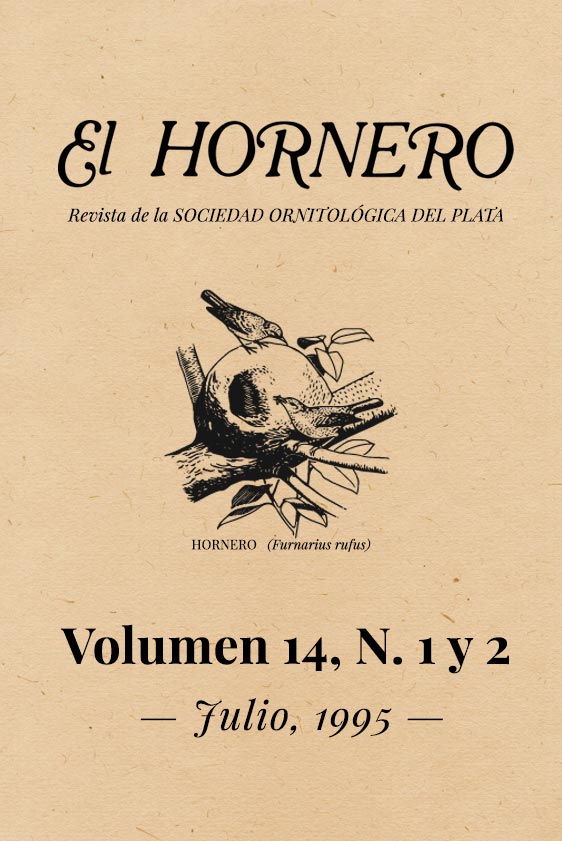Abstract
We studied the breeding biology of the Brown-Hooded Gull (Larus maculipennis) at artificial lagoons in Trelew, Chubut. We estimated colony size in 2310 breeding pairs. Gulls started to visit the lagoons during late September and to establish territories in early october. Nests were built on islands formed by Scirpus sp., emergent dead bushes, and on top of piles of debris in shallow waters. Gulls settled significantly earlier on the emergent vegetation furthest away from the coast. Egg-Iaying started during the first week of october, average clutch size was 2,57 eggs per nest, and the incubation period was approximately 23 days. Chicks started to hatch in early November and started to leave their territories at 5 weeks of age. Chicks showed low levels of mobility, remaining on the nest platforms for their first four weeks of age. Gulls did not forage in or close to the lagoons where they bred and insects were an important part of their diet.
References
Altmann.J.1974.Observationulstudyofbehavior:samplingmet-hods.Behavior49:227-67.
Beer,c.G.1966.Adaptationstonestinghabitatinthereproductivebehaviour01'theBlack-billedGullLarusbulleri.Ibis108:394-410.
Bongiorno,S.F.1970.Nest-siteselectionbyadultLaughingGulls(Larusatricilla).Anim.Behav.18:434-444.
Burger,J.1974a.Breedingbiologyandeeology01"thebrown-hoo-dedgul!inArgentina.Auk.91:601-613.
Burger,J.1974b.Breedingadaptationsol"Franklin'sgul!(l,aruspi-pixcan)toa marshhabitat.Anim.Behav.22:521-567.

This work is licensed under a Creative Commons Attribution-NonCommercial 4.0 International License.





